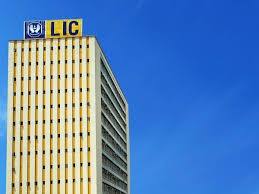 11-02-2021
11-02-2021
Market busy doing the math on LIC IPO, enterprise value

 Insurance Alertss
Insurance AlertssMarket busy doing the math on LIC IPO, enterprise value
MUMBAI: After failing to achieve it this financial year, the Finance Minister has vowed to bring out the much-awaited initial public offering of Life Insurance Corporation of India next financial year.
The Finance Bill 2021 has already laid the legal groundwork, and the government has sought Parliament approval for amending the LIC Act, which will allow it to revamp the life insurer’s board, streamline its accounting practices to align with the Sebi regulations and pump in Rs 25,000 crore in paid-up capital. In terms of the issue size of the offer, the Rs 25,000 crore in paid-up capital infused by the government could constitute total outstanding shares of 2,500 crore, if each share has a face value of Rs 10 each.
Given that the government has suggested selling up to 10 per cent stake in the life insurer, that will peg the issue size of the offer at around 250 crore shares. Out of that possible size, the government wants to reserve 10 per cent for LIC policy holders. LIC had 28.92 crore policy holders at the end of the last financial year, which implies that not all policy holders will be able to get their hands on a share of the life insurer, if the government keeps the issue size at 250 crore shares.
In terms of how much the government can raise, conservative estimates peg it at around Rs 1-1.2 lakh crore. And if that’s the worth of the 10 per cent stake, the valuation of the insurance behemoth could work out to be as much as Rs 12 lakh crore. At a market capitalisation of Rs 12 lakh crore, the price of LIC’s shares could work out to around Rs 480, nearly 50 per cent discount to the share price of SBI Life Insurance and about 44 per cent discount to that of HDFC Life Insurance.
